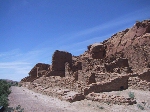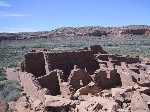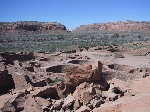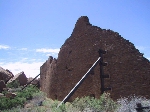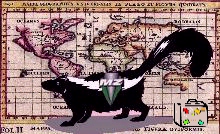|
By far the most interesting compound in Chaco is Pueblo Bonito. This complex is typical of the pueblo architecture found throughout
the Chacoan world. Pueblo Bonito is a "great-house" in that it was designed to be huge from the very beginning, with multiple stories,
kivas, and distinctive, precise masonry. Pueblo Bonito's walls were oriented to the sun and moon, and were surrounded by sophisticated
astronomical markers which we are only beginning to understand.
|
